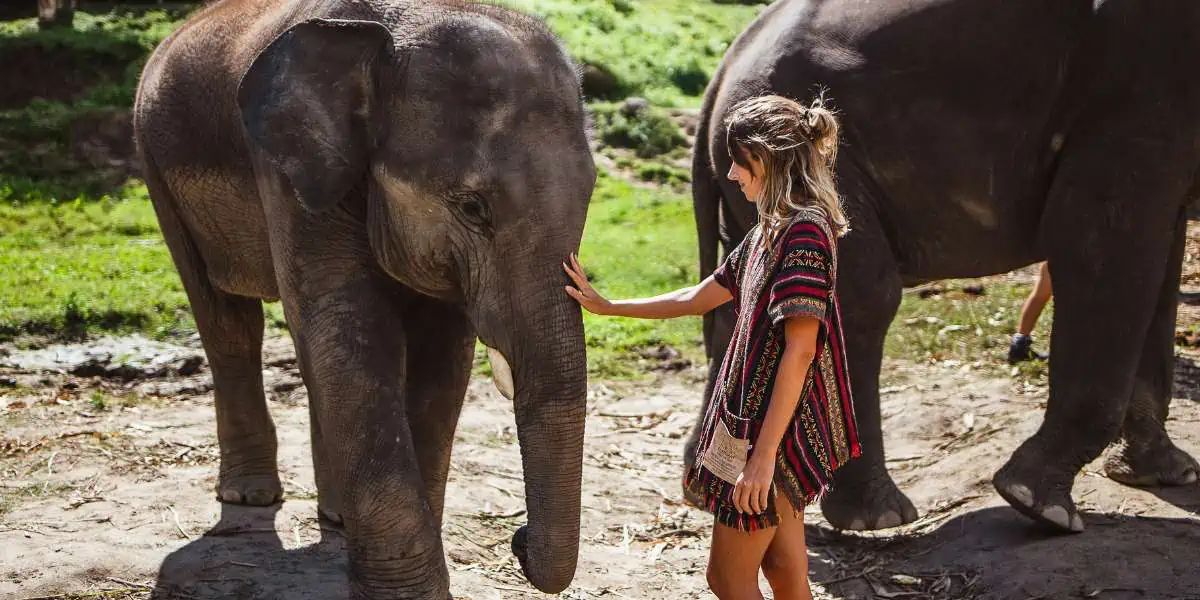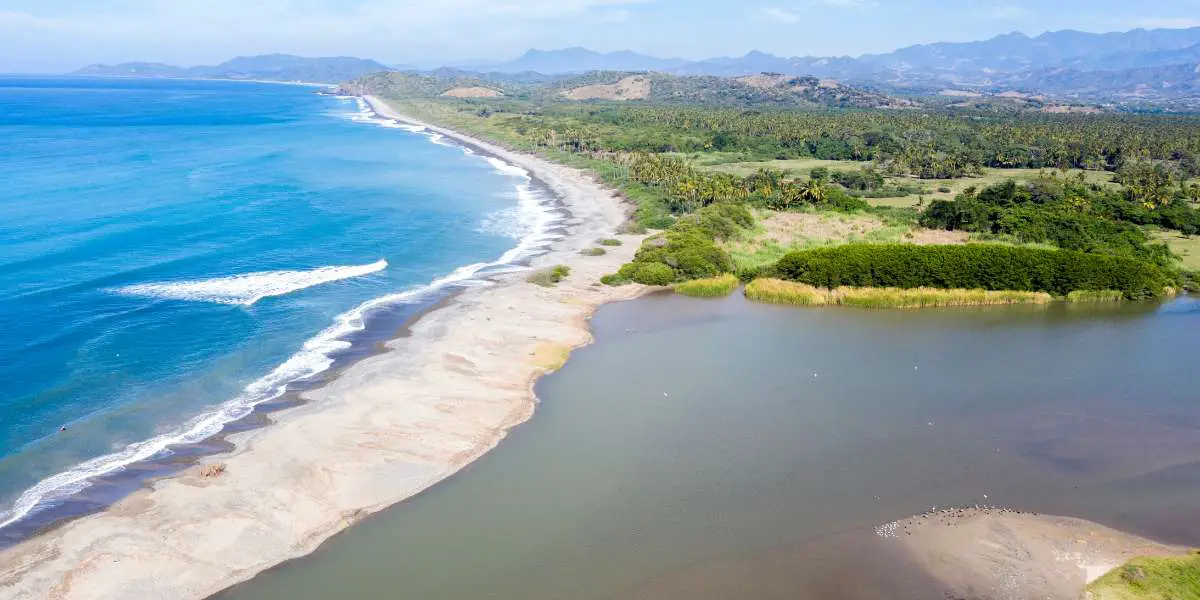Thailand is a nature lover’s paradise, home to rich biodiversity and diverse landscapes that provide habitat for exotic wildlife. From majestic elephants lumbering through lush jungles to monkeys frolicking near ancient temples, visitors can discover the country’s captivating animal kingdom. Embark on a journey to create unforgettable memories with Thailand’s furry, feathered, and scaled residents. Discover how to have meaningful connections while supporting conservation efforts.
Meet Magnificent Elephants in Their Natural Habitat
A highlight for many travelers is connecting with Thailand’s revered national animal—the impressive elephant. Around 3,000-4,000 Asian elephants remain in the wild in Thailand, found roaming protected national parks and wildlife sanctuaries:
- Kui Buri National Park – Herds traverse grasslands and cool off in freshwater streams.
- Kaeng Krachan National Park – Thailand’s largest national park shelters over 30 elephants near the Myanmar border.
- Salakpra Wildlife Sanctuary – Over 200 Asian elephants inhabit this sanctuary in Kanchanaburi Province.
Whilst elephant rides are still offered in some tourist areas, animal welfare concerns means this practice is increasingly controversial. More ethical elephant encounters include:
- Observing elephants in their natural environment – Attend camps like ENP in Chiang Rai for research and observation without direct interaction.
- Volunteering at ethical sanctuaries – Contribute to care at refuges like Elephant Nature Park Chiang Mai through feeding, bathing and medical care.
Visitors rave about intimate moments like feeding an elephant a banana from their own hand or watching a baby take an endearing mud bath. However, prioritizing ethical animal treatment ensures even brief encounters support conservation efforts.
Monkey Mayhem Around Ancient Ruins & City Streets
Cheeky monkeys charm visitors across Thailand, bringing delight as they swing through trees and bound across temples:
- Lopburi’s Street Monkeys – The monkey capital sees over 6,000 long-tailed macaques roam city streets and the Prang Sam Yot temple complex.
- Ubud’s Monkey Forests – Over 600 crab-eating macaques inhabit this sanctuary in Bali’s jungle.
- Phuket’s Gibbon Rehabilitation Project – White-handed gibbons brachiate through protected mangrove forests after rehabilitation.
Observe troops grooming, foraging for food, and caring for the young. Their human-like behaviors and facial expressions fascinate tourists and photographers. However, beware of potential monkey attacks – don’t carry food, avoid eye contact, and keep your belongings protected in bags.
Birds of Paradise Across Rivers & Forests
From kingfishers darting over rivers to hornbills soaring above the forest canopy, Thailand’s 350 resident and migratory birds dazzle:
Waterbirds
- Kaeng Krachan National Park – Spot colorful kingfishers, storks and over 20 duck species around the Phetchaburi River.
- Laem Phak Bia – Explore mangrove boardwalks in this Ramsar wetland site, home to crakes, herons, and pitta.
Forest Birds
- Khao Yai National Park – Rising from central plains, evergreen rainforests shelter rhinoceros hornbills and rare peafowl.
- Khao Sok National Park – Wreathed hornbills feed on fruit amidst lush jungle populated by elephants, tigers, and bears.
Bring binoculars and field guides to identify species spotted on jungle hikes, boat trips, canopy walks, and bird hides. Time tours for seasonal migrations or early morning birdsong. Support camps contributing to forest conservation.
Serpent Spotting – Finding Thailand’s Elusive Snakes
Over 200 snake species slither across Thailand – from venomous cobras to harmless rat snakes. Brave travelers can seek serpents on adventures such as:
- Snake Spotting Night Tours – In Krabi, hang head torches to spot pythons, kraits & pit vipers on mangrove walks.
- Show & Release Shows – Learn about snake behavior and ecology at camps that safely catch and release back to natural habitats.
- Conservation Centers – The Queen Saovabha Memorial Institute Bangkok holds snake shows to promote the treatment of bites and medical research.
Yet habitat loss threatens Thailand’s snakes – 20 species are endangered, including the Siamese peninsula pit viper. Most conservation centers discourage handling snakes due to high risk. Prioritize centers promoting public education and wilderness conservation.
Understanding Ethical Wildlife Tourism
As tourism expands across Thailand, animal welfare and conservation is threatened if visitor numbers and engagement is not carefully managed.
To avoid unintended consequences from wildlife encounters, experts advocate choosing tour operators wisely based on:
- Animal welfare policies – Avoid venues allowing visitor mistreatment or exploitation of animals for financial gain.
- ’No riding’ policies – Prioritize venues not allowing elephant riding or shows forcing animals into unnatural acts.
- Conservation contributions – Opt for non-profits supporting wildlife rehabilitation & habitat protection.
By supporting ethical wildlife tourism, visitors can help sustain Thailand’s biodiversity while respecting animal wellbeing.
Avoid Unethical Wildlife Practices in Thailand
Travelers should avoid exploitative venues that:
- Mistreat animals for tourists’ sake – This includes elephant riding, circus-style shows, and coercive animal photography ops.
- Separate mothers & babies – For instance, venues taking tiger cubs from mothers to do shows.
- Promote illegal wildlife trade – Stay away from venues offering experiences with smuggled wildlife.
Unethical establishments may claim to be sanctuaries – always do thorough research before booking. Rely on word-of-mouth reviews over flashy websites and pamphlets.
How Sustainable Tourism Supports Wildlife Conservation

Ecotourism presents opportunities to fund wildlife conservation efforts across Thailand. This requires ensuring tourist revenue trickles down to local communities and at-risk species.
The NONPHU WILDLIFE SANCTUARY northeast of Bangkok exemplifies sustainable wildlife tourism – income from ethical encounters with elephants and tigers funds habitat protection. The community-owned Gibbon Rehabilitation Project on Phuket similarly supports illegal pet rescue & rainforest restoration.
Through sustainable tourism, visitors can counter exploitation by:
- Funding animal rescue & rehabilitation sanctuaries
- Protecting essential forest & marine habitats
- Raising local environmental awareness
- Empowering communities’ welfare alongside conservation
Ultimately conscientious travelers help sustain Thailand’s spectacular animal kingdom for generations to come.
Protecting Thailand’s Natural Heritage
Realizing economic opportunities from tourism, yet facing concerning wildlife population declines, the Thai government balances improving infrastructure access with environmental protections.
Significant developments include:
- Wildlife conservation laws – The Wild Animal Reservation and Protection Act outlaws poaching and illegal wildlife trade.
- Forest land protection – Over 23% of land lies within protected conservation forests and national parks.
- International species protection – Thailand works with CITES to adhere to trade restrictions around endangered species.
- Wildlife rehabilitation – The DNP rescue center rehabilitates and releases native creatures confiscated from traffickers.
Yet further action is urgently needed to curb deforestation and land encroachment. Thankfully local communities recognize conservation’s importance for long-term tourism revenue and are mobilizing grassroots efforts.
Local Community Conservation Initiatives
Many rural villages inside national parks gain income through hotels, tours, handicrafts and cultural shows. Hence communities have intimate connections and incentives to steward native wildlife and habitats.
Community-based projects include:
- Wildlife monitoring – Local guides track and analyze endangered species populations and human-wildlife interactions.
- Forest restoration – Villagers nurture saplings and remove invasive plants to revive degraded habitats.
- Nature Education – Communities give presentations in schools, temples, and to tourists to share conservation knowledge.
- Waste Management – Local cooperatives reduce pollution and implement recycling and composting programs.
By valuing Thailand’s natural heritage, rural communities exemplify sustainable models for habitat preservation through low-impact ecotourism.
Promoting Responsible Tourism Protects Rare Species
Showcasing endangered native wildlife to visitors seeking meaningful connections fosters support for expanded conservation. As travelers encounter exotic species, they gain appreciation for wildlife’s intrinsic value and see the impacts of habitat loss firsthand.
For instance, seeing the 1500 or so wild tigers remaining, compared to over 100,000 less than a century ago, showcases this crisis. Visitors then fund anti-poaching protection units while supporting responsible tour operators committed to limiting negative environmental impacts from tourism.
Conscientious travel choices make a difference – visitors can:
- Select eco-certified hotels supporting local communities.
- Contribute donations to wildlife rehabilitation centers.
- Avoid polluting activities like releasing sky lanterns.
- Share conservation messages after returning home.
Making considerate decisions enables tourists to protect fragile environments and critically endangered species.
Reflecting on Connecting with Thailand’s Alluring Animals
Encountering Thailand’s wildlife leaves visitors with profound inspiration for regional biodiversity and conservation challenges ahead. Witnessing first-hand the intelligence and family bonds of elephants, critically endangered Indochinese tigers, and long-tailed macaques clinging to life in fragmented forests reminds travelers of mankind’s privilege and responsibility in supporting these threatened creatures.
The thought-provoking sight of a stately hornbill soaring over a verdant jungle or a peek into the life of a baby elephant finding its feet inspires awe and concern over these species’ uncertain futures. As habitat loss accelerates in the drive for development, the need for delicate balance has never been more important.
Yet glimmers remain with Thailand’s strong Buddhist principles of respect for all living beings and non-violence towards animals. Rural communities embracing ecotourism show promise for harmonious co-existence between people and wildlife. Visitors now play a critical role in advocating for expanding protected areas, curbing exploitative tourism venues, and funding conservation initiatives.
Through responsible travel, ordinary tourists contribute to the extraordinary goal of Thailand’s animals thriving for generations, from majestic elephants wandering grassy plains to a resplendent peacock dancing in an evergreen forest.
How You Can Ensure Thailand’s Wildlife Thrives?
Numerous threats endanger Thailand’s spectacular wildlife, yet strategic sustainable tourism initiatives offer hope for harmony between nature and people. Every mindful traveler now plays a vital part in building momentum towards Thailand achieving ambitious biodiversity targets.
Make your next trip count by:
- Booking tours funding community conservation and education
- Sharing stories inspiring others to support wildlife tourism best-practices
- Contacting government agencies and NGOs to showcase foreign visitors’ commitment to expanding habitat protections
- Reducing individual environmental footprint from plastics and emissions
- Donating to vetted non-profit groups conducting animal rehabilitation and forest restoration
Collectively advocating for biodiversity conservation ensures the survival of Thailand’s natural heritage treasured by so many from forest monks to young children encountering their first snake. Our voices when multiplied can influence change, preserving wondrous creatures great and small for future generations. Will you join in helping Thailand balance development and conservation?





